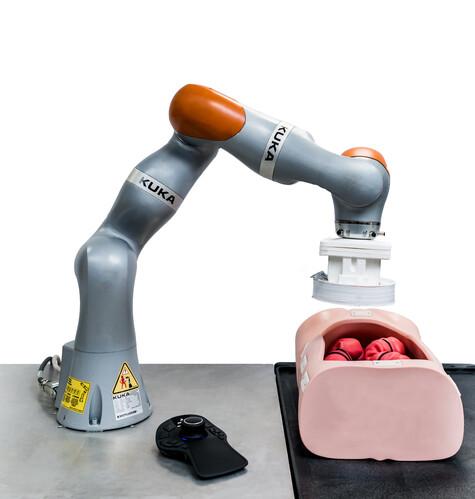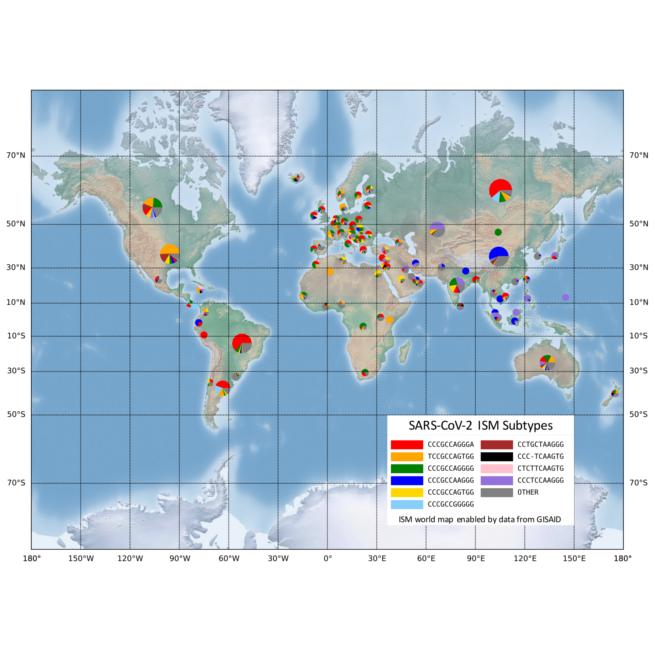ABERDEEN PROVING GROUND, Md. — A swarm of hundreds of unmanned air vehicles will soon descend on unmanned ground vehicles to autonomously recharge, thanks to U.S. Army-funded research now underway at the University of Illinois Chicago. The U.S. Army Combat…
Tag: ROBOTRY/ARTIFICIAL INTELLIGENCE
AI traffic congestion research earns Future Leaders Fellowship
Dr. Mauro Vallati has received a prestigious Future Leaders Fellowship for his innovative research into systems driven by artificial intelligence (AI) for urban traffic control
New study reveals how the nervous system mutes or boosts sensory information to make behavioral deci
Fruit flies may be able to teach researchers a thing or two about artificial intelligence. University of Michigan biologists and their colleagues have uncovered a neural network that enables Drosophila melanogaster fruit flies to convert external stimuli of varying intensities…
Nudges with machine learning triples advanced care conversations among cancer patients
During pandemic, Penn-developed algorithm helped sustain end-of-life care discussions with patients
Robot swarms follow instructions to create art
Study shows that robot swarms can follow instructions to create paintings, suggesting that artists could incorporate such technology into their work
Robots are helping to advance developmental biology
The study of developmental biology is getting a robotic helping hand. Scientists are using a custom robot to survey how mutations in regulatory regions of the genome affect animal development. These regions aren’t genes, but rather stretches of DNA called…
Deep neural networks show promise for predicting future self-harm based on clinical notes
Researchers at the Medical University of South Carolina use deep learning models to identify patients at risk of intentional self-harm based on unstructured patient clinical notes alone
Penn Medicine researchers use artificial intelligence to ‘redefine’ Alzheimer’s Disease
The team will integrate imaging, clinical, and genetic data from more than 60,000 patients in search of new biomarkers
Machine learning predicts how long museum visitors will engage with exhibits
In a proof-of-concept study, education and artificial intelligence researchers have demonstrated the use of a machine-learning model to predict how long individual museum visitors will engage with a given exhibit. The finding opens the door to a host of new…
SwRI’s laser coating removal robot wins R&D 100 Award
System can remove full range of aircraft coatings layer-by-layer
Wearable IT devices: Dyeing process gives textiles electronic properties
Computer scientists at Saarland University show how these special textiles can be produced in a comparatively easy way, thus opening up new use cases. “Our goal was to integrate interactive functionalities directly into the fibers of textiles instead of just…
Cameras that can learn
Intelligent cameras could be one step closer thanks to a research collaboration between the Universities of Bristol and Manchester who have developed cameras that can learn and understand what they are seeing. Roboticists and artificial intelligence (AI) researchers know there…
Researchers develop new model of the brain’s real-life neural networks
Findings have implications for AI, cancer detection and Parkinson’s treatment
New deep learning models: Fewer neurons, more intelligence
Artificial intelligence (AI) can become more efficient and reliable if it is made to mimic biological models; new approaches in AI research are hugely successful in experiments

Using robotic assistance to make colonoscopy kinder and easier
Scientists have made a breakthrough in their work to develop semi-autonomous colonoscopy, using a robot to guide a medical device into the body.
Using robotic assistance to make colonoscopy kinder and easier
Scientists have made a breakthrough in their work to develop semi-autonomous colonoscopy, using a robot to guide a medical device into the body. The milestone brings closer the prospect of an intelligent robotic system being able to guide instruments to…
UMD researchers use artificial intelligence language tools to decode molecular movements
Algorithms–like the ones that fill in words as people type–can learn to predict how and when proteins form different shapes.
‘Universal law of touch’ will enable new advances in virtual reality
Seismic waves, commonly associated with earthquakes, have been used by scientists to develop a universal scaling law for the sense of touch. A team, led by researchers at the University of Birmingham, used Rayleigh waves to create the first scaling…
2020 Neukom Awards honors complex stories in complex times
Winners peer into imagined worlds with real consequences
Applying artificial intelligence to science education
A new review published in the Journal of Research in Science Teaching highlights the potential of machine learning–a subset of artificial intelligence–in science education. Although the authors initiated their review before the COVID-19 outbreak, the pandemic highlights the need to…
Deep learning takes on synthetic biology
Computational algorithms enable identification and optimization of RNA-based tools for myriad applications
Connecting through data
Geographic information science professor Krzysztof Janowicz receives a $5 million NSF grant to pursue large-scale open knowledge graphs
Tracking the trackers: uOttawa researchers launch COVID-19 Global Pandemic App Watch
The Global Pandemic App Watch will track the uptake of COVID-19 contact-tracing and exposure-notification apps around the world
ACM announces new conference on AI in finance
Inaugural conference to be held October 14-16
Two NRL research physicists named 2020 citation laureates ‘of nobel class’
WASHINGTON, D.C. – Two research physicists from the U.S. Naval Research Laboratory were named Citation Laureates “Researchers of Nobel Class” by Clarivate on Sept. 23 – Thomas L. Carroll and Louis M. Pecora – for research in nonlinear dynamics including…
Underwater robots to autonomously dock mid-mission to recharge and transfer data
WEST LAFAYETTE, Ind. — Robots can be amazing tools for search-and-rescue missions and environmental studies, but eventually they must return to a base to recharge their batteries and upload their data. That can be a challenge if your robot is…
This ‘squidbot’ jets around and takes pics of coral and fish
Engineers at the University of California San Diego have built a squid-like robot that can swim untethered, propelling itself by generating jets of water. The robot carries its own power source inside its body. It can also carry a sensor,…
CU Anschutz announces unique technology to rapidly screen new drugs, therapies
Potential to cut screening time by half, CU Anschutz first academic institution in Mountain West to have this technology
Caring for others is a key driver in getting people to use chatbots for mental health
A new study from North Carolina State University and Syracuse University assessed what would motivate people to use chatbots for mental health services in the wake of a mass shooting. The researchers found that users’ desire to help others with…
The best of both worlds: A new take on metal-plastic hybrid 3D printing
Scientists develop a novel and surprisingly simple method to print 3D structures made of metal and plastic, paving the way for 3D electronics
Syracuse U. professor receives NSF grant for Internet of Things research
The growing capabilities of sensing, computing and communication devices are leading to an explosion of Internet of Things (IoT) infrastructures. Advances in such technologies as autonomous systems and artificial intelligence also promise enormous economic and societal benefits. Naturally, it is…
Predictive Science Research Gets Major Boost Thanks to the Department of Energy
The Oden Institute at UT Austin Selected by DOE for Major Predictive Science Research Cooperative

Genetic tracing ‘barcode’ is rapidly revealing COVID-19’s journey and evolution
Drexel University researchers have reported a method to quickly identify and label mutated versions of the virus that causes COVID-19.
Genetic tracing ‘barcode’ is rapidly revealing COVID-19’s journey and evolution
Drexel researchers’ method helps uncover patterns in SARS-CoV-2’s genetic mutations
Incubating ideas: Agility Summit showcases innovative solutions to naval challenges
ARLINGTON, Va.–A mobile app allowing Sailors and Marines to collaborate with leadership to solve problems. A Wikipedia-style platform for the entire Navy–which can be shared in a Cloud environment and serve as a repository of institutional knowledge. Streamlining the use…
Clarigent Health launches Clairity to support mental health risk reduction
Clairity supports clinical decisions and care with AI analysis of patient speech, treatment progress trends, and risk radar across patient groups
Tool helps clear biases from computer vision
Researchers at Princeton University have developed a tool that flags potential biases in sets of images used to train artificial intelligence (AI) systems. The work is part of a larger effort to remedy and prevent the biases that have crept…

Artificial intelligence in art: a simple tool or creative genius?
Intelligent algorithms are used to create paintings, write poems, and compose music.
Artificial intelligence in art: a simple tool or creative genius?
A study shows how language humanizes AI
Researchers exploit weaknesses of master game bots
UNIVERSITY PARK, Pa. — If you’ve ever played an online video game, you’ve likely competed with a bot — an AI-driven program that plays on behalf of a human. Many of these bots are created using deep reinforcement learning, which…
Safe flight: New method detects onset of destructive oscillations in aircraft turbines
New method for early flutter detection will help in the development of safer and more eco-friendly turbines in aircraft
Drugs aren’t typically tested on women. AI could correct that bias
Researchers at Columbia University have developed AwareDX–Analysing Women At Risk for Experiencing Drug toXicity–a machine learning algorithm that identifies and predicts differences in adverse drug effects between men and women by analyzing 50 years’ worth of reports in an FDA…
What is your attitude towards a humanoid robot? Your brain activity can tell us!
Scientists at IIT-Istituto Italiano di Tecnologia in Italy reported in Science Robotics that attitudes towards robot can be detected from neural activity; the study was supported by the European Research Council
Innovative model improves Army human-agent teaming
ADELPHI, Md. — Army researchers developed a novel computational model for gathering cognitive data that may be a game changer in the fields of neuroscience and econometrics, and has broad relevance to networked and multi-agent systems. At the U.S. Army…
AI can detect COVID-19 in the lungs like a virtual physician, new study shows
The new UCF co-developed algorithm can accurately identify COVID-19 cases, as well as distinguish them from influenza.
Driving behavior less ‘robotic’ thanks to new Delft model
Researchers from TU Delft have now developed a new model that describes driving behaviour on the basis of one underlying ‘human’ principle: managing the risk below a threshold level. This model can accurately predict human behaviour during a wide range…
Science and scientists held in high esteem across global publics
Yet there is ambivalence in many publics over developments in AI, workplace automation, food science
Cannabis data lacking, but machine learning could help
A new study shows we know little about compounds in marijuana, and names don’t mean much
Machine learning homes in on catalyst interactions to accelerate materials development
A machine learning technique rapidly rediscovered rules governing catalysts that took humans years of difficult calculations to reveal–and even explained a deviation. The University of Michigan team that developed the technique believes other researchers will be able to use it…
AI technology can predict vanadium flow battery performance and cost
Vanadium flow batteries (VFBs) are promising for stationary large-scale energy storage due to their high safety, long cycle life, and high efficiency. The cost of a VFB system mainly depends on the VFB stack, electrolyte, and control system. Developing a…